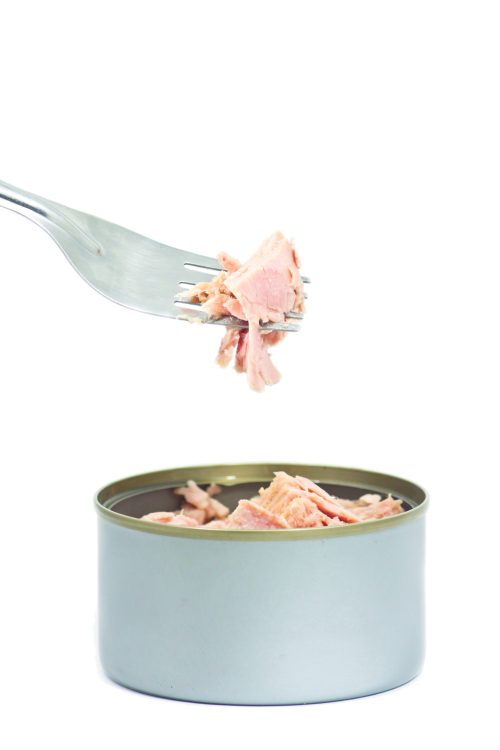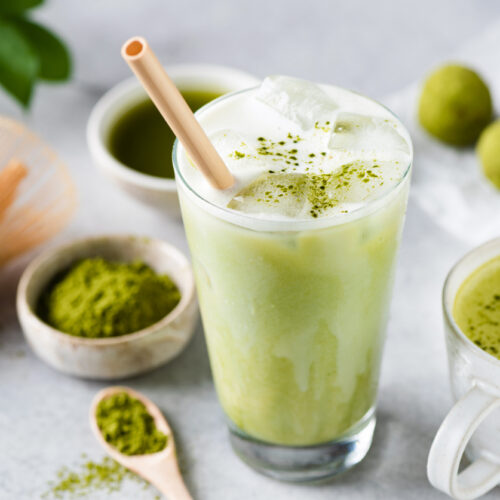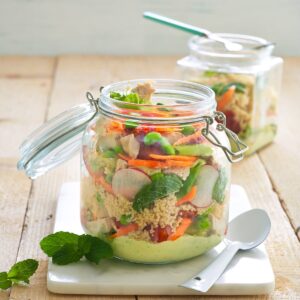
Fresh fish and other seafood can be pricey and not all of us are adept with a fishing rod.
Thank goodness for canned seafood: it’s super- convenient, economical, healthy and versatile — a hard-to-beat combo.
What’s available
Tuna and salmon dominate store shelves, available in chunks, flakes, slices and sandwich-style (think pulverised). Unflavoured salmon has only salt added, although there are a couple of products highlighting ‘no added salt’. Unflavoured varieties of tuna are canned in brine (salted water), spring water or different oils such as soy bean oil and extra-virgin olive oil.
There is also a wide range of flavoured options such as tuna or salmon with: mayonnaise; tomato with basil; lemon and cracked pepper; mustard; spicy Thai; as well as smoked varieties. Sardines, mackerel, smoked oysters, anchovies, smoked mussels, crab meat, smoked fish fillets and shrimps are also available canned.
How much fish is in the can?
If you’re using price as a guide, it pays to compare the amount of fish that’s in the can. Check the ingredients list or compare drained weights.
The amount of fish in water or oil can vary from 60 to 93 per cent of the total canned contents. Flavoured seafood products ranged from 42 to 65 per cent seafood, tuna spread had 23 per cent tuna. Cheaper products may just have less seafood in them. On the other hand, we would expect there to be less fish in a can of John West Tuna & Beans (around 30 per cent tuna).
Nutrition
Canned seafood is a good source of protein. The products we’ve highlighted (see below) provide 13-18g protein in a small can. At a similar weight two eggs provide 12g protein.
Canned seafood with bones is also a good source of calcium. Unfortunately, many products don’t include the amount of calcium on their nutrition information panel so we’ve used food composition tables to compare different fish.
The amount of calcium in different brands varies but sardines are the calcium star. Around 90g sardines — a small can, drained — provides around 500mg calcium. That’s almost as much as a glass of calcium-fortified milk and around half of most adults’ daily calcium requirements. The same amount of pink, sockeye and chum salmon, or mackerel, provides around 220mg calcium, and canned shrimp and red salmon contain 85-100mg calcium.
At the other end of the scale, the same amount of canned tuna has only around 10mg calcium.
Canned fish can be a good source of the healthy long-chain omega-3 fats. We prefer products that state the omega-3 content. These will show the amount of DHA and EPA, which are the important long-chain omega-3s from fish. When comparing products choose those with 0.2g (or 200mg) per 100g total omega-3 or more. Different brands source their fish from different areas so we can’t assume all products with the same name have similar amounts of omega-3. They vary widely.
In general, we recommend using products in spring water rather than those in oil. We prefer the fat in the fish rather than added fat. This also keeps the amount of energy down as even when drained those canned in oil will be higher in fat.
If it’s a choice between seafood canned in brine or spring water, we recommend the latter as the sodium content will be higher when it’s in brine. Note that salt is also usually added to products canned in oil. When comparing like products, choose varieties with 400mg or less sodium per 100g. Be aware that anchovies are especially high in sodium, although we generally use these in small amounts (which is good).
Iodine
All seafood, including canned products, is a good source of iodine. Because many of us don’t get enough of this important mineral in our diets, all of our bread, except for organic bread, is fortified with iodine.
HFG picks
Any of these make a great base for a quick healthy lunch: serve in a salad, add to an omelette or mash on toast.
Brunswick Seafood Snacks — Boneless Herring Fillets (Golden Smoked)
- 92g (80g, drained), $2.39
- Per 100g: 838kJ, 20.8g protein, 13.1g fat, 3g sat fat, (2300mg) 2.3g omega-3, 394mg sodium, calcium not stated, $2.99
- An omega-3 boost, unfortunately with little calcium as these are boneless. This was a favourite with our tasters. Would be great in a fish pie.
Brunswick Sardines in Spring Water No Added Salt
- 106g (92g, drained), $1.75
- Per 100g: 645kJ, 20.3g protein, 8.1g fat, 1.9g sat fat, omega-3 not stated, 218mg sodium, calcium not stated, $1.90
- An economical protein source that will be high in calcium. Nice meaty texture. Mild and not too fishy or salty.
John West Wild Alaskan Pink Salmon
- 105g can (79g, drained), $2.49
- Drained, per 100g: 634kJ, 22.8g protein, 6.6g fat, 1.9g sat fat, (1665mg) 1.665g omega-3, 403mg sodium, 251mg calcium, $3.15
- Mild flavour. Great serve size for a salad.
Sealord Salmon Sensations Seeded Mustard
- 85g, $2.29
- Per 100g: 619kJ, 15.5g protein, 7.3g fat, 1g sat fat, (400mg) 0.4g omega-3, 270mg sodium, calcium not stated, $2.69
- Nice zingy mustard flavour.
Choosing between products in spring water, brine and oil can make a big difference to the kJ and sodium.
| HOME-BRAND TUNA | ENERGY | SODIUM per 100g |
| in spring water | 481kJ | 197mg |
| in brine | 464kJ | 368mg |
| in oil | 720kJ | 424mg |
www.healthyfood.com










